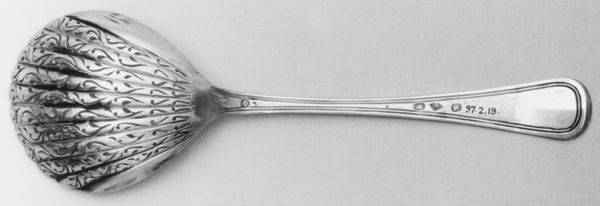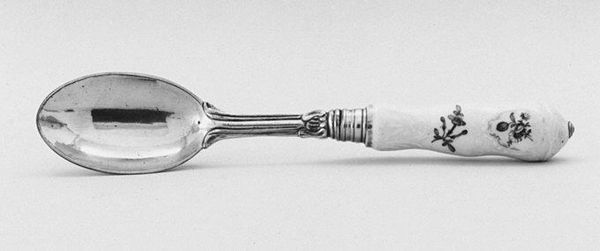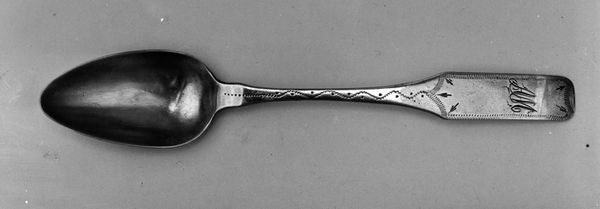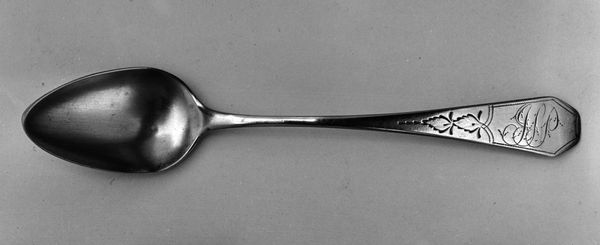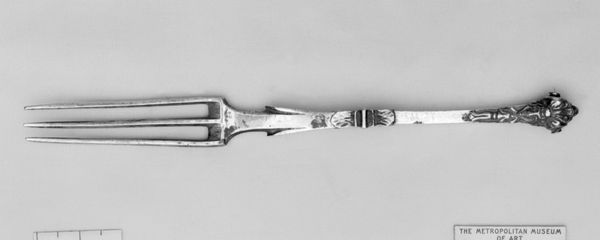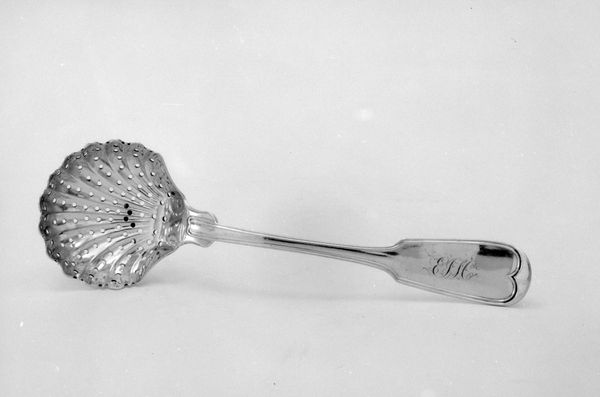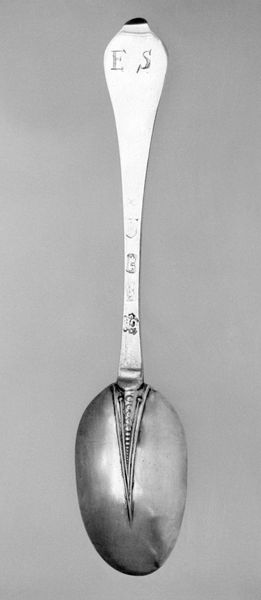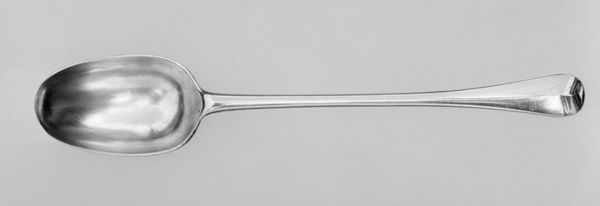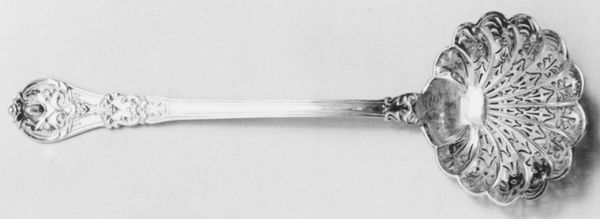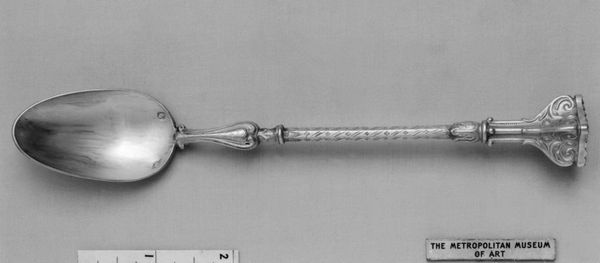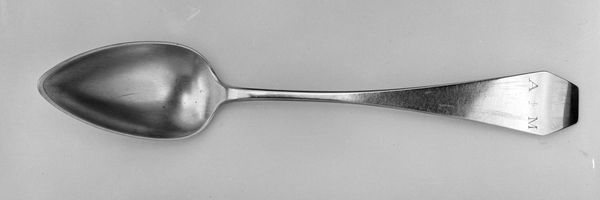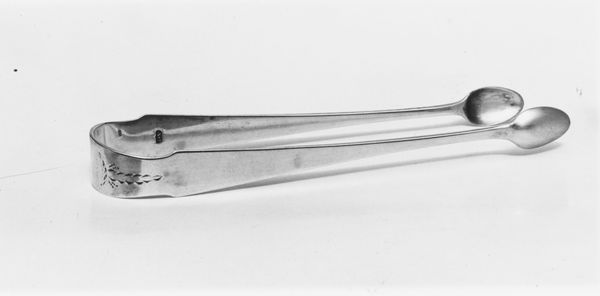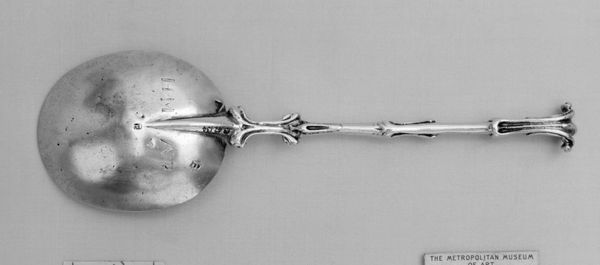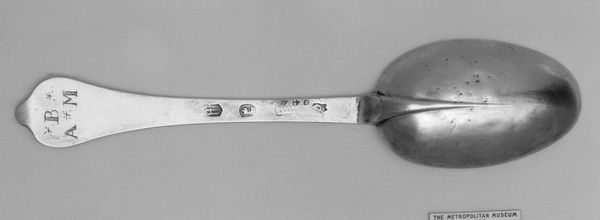
silver, sculpture
#
silver
#
ancient-mediterranean
#
sculpture
#
romanticism
#
decorative-art
Dimensions: Length (spoon .1): 8 3/4 in. (22.2 cm); Length (fork .2): 8 5/8 in. (21.9 cm)
Copyright: Public Domain
This traveling spoon and fork were crafted in the late 18th to early 19th century by Joseph-Baptiste Fuchs, a French goldsmith. The elegance of these utensils speaks to a time of immense social change, as Europe moved towards the industrial revolution, yet remnants of aristocracy remained. Imagine the life of a privileged traveler during this era. The spoon and fork become extensions of their identity, announcing their status as they journeyed through a rapidly changing world. It prompts us to consider the intricate relationship between gender, class, and travel. Historically, travel was often a gendered experience, with men traversing the world for business or exploration, while women’s mobility was more restricted. These objects invite us to reflect on the emotional experience of travel. Were they a symbol of comfort and familiarity in a foreign land? Or did they represent a barrier, a constant reminder of the traveler’s difference from the local population? They stand as quiet witnesses to a past where even the simplest tools carried the weight of social meaning.
Comments
No comments
Be the first to comment and join the conversation on the ultimate creative platform.
